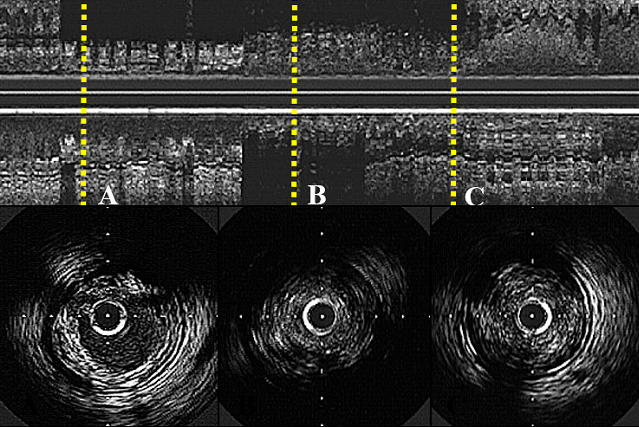VAMPIRE 3: Attenuated Plaque May Signal Benefit of Thrombus Removal in PCI
The Japanese trial, while positive, may not yield changes in practice in other countries, where IVUS uptake remains low, experts say.

DENVER, CO—If you use the right imaging to find the right patients, there may yet be a role for distal protection during PCI, the Vacuum Aspiration Thrombus Removal (VAMPIRE) 3 trial suggests.
“Distal protection during catheter intervention may facilitate procedural safety in patients with acute coronary syndromes,” Kiyoshi Hibi, MD (Yokohama City University Medical Center, Yokohama, Japan), concluded during a First Report Investigation session in the Main Arena at TCT 2017 on Monday.
The catch: distal protection has been all but abandoned following a series of failed trials that suggested either no benefit or possible harm from the use of thrombus aspiration and filter devices.
VAMPIRE 3 enrolled 200 patients with STEMI or non-STEMI within 2 months of their symptom onset, or with unstable angina for which PCI was indicated. To be included, patients had to have lesions characterized by attenuated plaque of at least 5 mm in length on the basis of pre-PCI IVUS. Attenuated plaque was defined as IVUS images with backward signal attenuation of ≥ 180 degrees behind plaque without dense calcium. At the time of PCI, patients—all from Japanese sites—were randomized to use of distal protection using the Filtrap device (Nipro Corporation), or no distal protection.
The primary endpoint of no-reflow phenomenon during PCI was seen in 26.5% of patients in the distal protection group and in 41.7% of the no protection group (P = 0.0261). Corrected TIMI frame count and major adverse cardiac events were also less common in the distal protection group. Infarct size by CK or CK-MB was similar in both groups.
IVUS Buy-in Needed
Discussing the results in a morning press conference, experts said they found the results “convincing” but unlikely to influence practice outside of Japan. While IVUS use is roughly 80% for all coronary interventions in Japan, that number is closer to 10% in the United States, for example, according to panel member Jonathan Hill, MD (King's College Hospital, London, England). “So to implement your protocol would be very difficult if there is not more acceptance of IVUS,” he said.
Others pointed to the fact that other studies, including the EMERALD trial, have struggled to recruit enough patients with large enough plaque burden. VAMPIRE 3 “is a tremendous study because it is looking at these large-plaque-burden patients, and for the first time, even in a small number of patients, is showing some clinical benefit,” press conference chair Roxana Mehran, MD (Icahn School of Medicine at Mount Sinai, New York, NY), observed.
“The difference between this study and previous trials is that they used advanced imaging,” David Cohen, MD (Saint Luke’s Mid America Heart Institute, Kansas City, MO), observed. “And until practice changes in the United States, I suspect [use of distal protection is not] going to take off quickly for coronary interventions.”
Photo Credit: K. Hibi. Distal filter protection versus conventional treatment during PCI in patients with attenuated plaque identified by IVUS. The Vacuum Aspiration Thrombus Removal (VAMPIRE) 3 trial. Presented at: TCT 2017.
Shelley Wood was the Editor-in-Chief of TCTMD and the Editorial Director at the Cardiovascular Research Foundation (CRF) from October 2015…
Read Full BioSources
Hibi K, et al. Distal filter protection versus conventional treatment during PCI in patients with attenuated plaque identified by IVUS. The Vacuum Aspiration Thrombus Removal (VAMPIRE) 3 trial. Presented at: TCT 2017. October 31, 2017. Denver, CO.
Disclosures
- Hibi reports receiving consulting fees/honoraria from Nipro and Boston Scientific


Comments